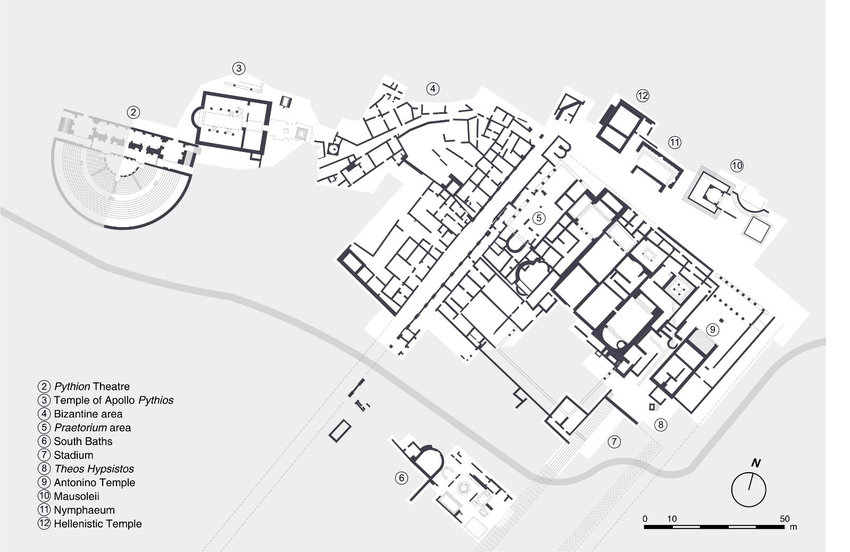
A Stage for Roman Spectacle
The Pythion Theater, nestled within the sacred precinct of Apollo Pythios in Gortyna, Crete, offers a captivating glimpse into the cultural and social life of the city during the Roman Imperial era. The theater’s construction and subsequent modifications reflect the evolving role of performance and spectacle in the Roman province of Crete and Cyrenaica.
Location and Context
The Pythion Theater is strategically located adjacent to the Temple of Apollo Pythios, on the plain east of Gortyna’s city center. This close proximity suggests a strong connection between the theater and the religious activities associated with the sanctuary. The theater’s position also places it in close proximity to other important areas of the city, such as the Praetorium and the Agora, highlighting its role as a central hub for public gatherings and entertainment.
Construction and Architectural Features
The Pythion Theater was built in the 2nd century AD, during the Roman Imperial era. The theater’s architecture reflects typical Roman design principles, with a semicircular cavea (seating area) divided into two sectors by a central ambulacrum (passageway). The cavea could accommodate an estimated 2000 spectators, indicating the theater’s importance as a venue for large-scale public events.
The theater’s stage (scaenae frons) is rectilinear, with three openings and elaborate architectural decorations. Two aditus (entranceways) provide access to the stage from the outside, facilitating the movement of actors and props. The orchestra, a circular space in front of the stage, served as the performance area for musicians, dancers, and other performers.
Function and Purpose
The Pythion Theater likely served multiple functions within the context of Roman Gortyna. Its primary purpose was undoubtedly to host theatrical performances, including comedies, tragedies, and other forms of dramatic entertainment. The theater’s acoustics, as revealed by recent virtual acoustic analyses, were particularly well-suited for spoken word performances, suggesting a focus on drama and oratory.
The theater’s close association with the sanctuary of Apollo Pythios also suggests its use for religious ceremonies and festivals. The Ludi Apollinares, games and festivities dedicated to Apollo, were likely celebrated in the theater, featuring theatrical performances alongside athletic contests and other forms of entertainment.
Furthermore, the Pythion Theater may have served as a venue for political and civic gatherings. The Koinon ton Kretaieon, the federal assembly of Cretan cities, is believed to have held its meetings in the sanctuary of Apollo Pythios. The theater, with its ample seating capacity and good acoustics, would have been an ideal location for such assemblies.
Later Modifications and Decline
The Pythion Theater underwent some modifications in the 3rd century AD, possibly reflecting changes in its function or the evolving needs of the community. However, the theater’s use declined in the Late Antique period, coinciding with the broader decline of Gortyna and the rise of Christianity. The theater was eventually abandoned and fell into ruin, its once-grand structures slowly reclaimed by nature.
Archaeological Investigations
Archaeological excavations at the Pythion Theater have revealed valuable information about its construction, architectural features, and historical context. The excavations, conducted by the University of Padua in the early 21st century, have helped to reconstruct the theater’s original appearance and shed light on its various functions throughout its history.
Archaeological Site: Key Points
- Construction Period: 2nd century AD
- Location: Adjacent to the Temple of Apollo Pythios, on the plain east of Gortyna’s city center
- Dimensions: The theater’s cavea has a diameter of approximately 51 meters, and the orchestra has a diameter of about 12 meters
- Historical Significance: Served as a venue for theatrical performances, religious ceremonies, and possibly political gatherings in Roman Gortyna
- Current Status: The ruins of the Pythion Theater are preserved at the archaeological site of Gortyna, offering visitors a glimpse into the city’s rich cultural and social life during the Roman Imperial era
References
- Bonetto, J., Bertelli, A., & Colla, M. (2015). New researches at the sanctuary of Apollo Pythios at Gortyn. In Proceedings of the 3rd Meeting, Rethymno, 5-8 December 2013, (Vol. A, pp. 529–536). Rethymnon: Faculty of Letters Publications, University of Crete, Ministry of Culture and Sports – Ephorate of Antiquities of Rethymnon.
- Bonetto, J., Francisci, D., & Mazzochin, S. (eds), 2019. Gortina IX.1. Il Teatro del Pythion. Scavi e Ricerche 2001-2013. Monografie della Scuola Archeologica di Atene e delle Missioni Italiane in Oriente, 28. Atene: Scuola Archeologica Italiana di Atene.
- Manzetti, Maria Cristina. 2019. “The Performances at the Theatre of the Pythion in Gortyna, Crete. Virtual Acoustics Analysis as a Support for Interpretation” Open Archaeology 5: 434–443.
Site Info
Access
The site is fenced but you can walk by.














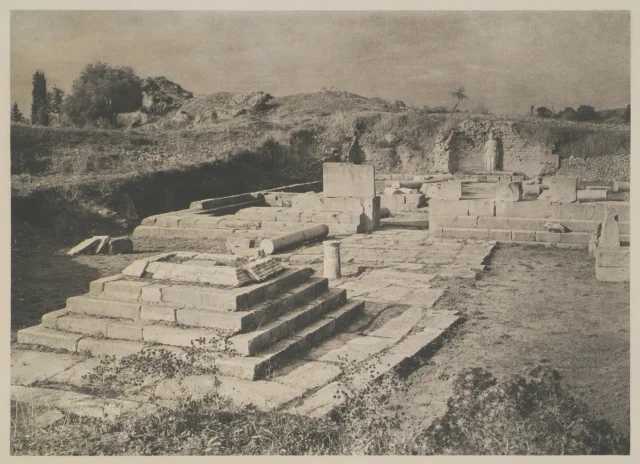

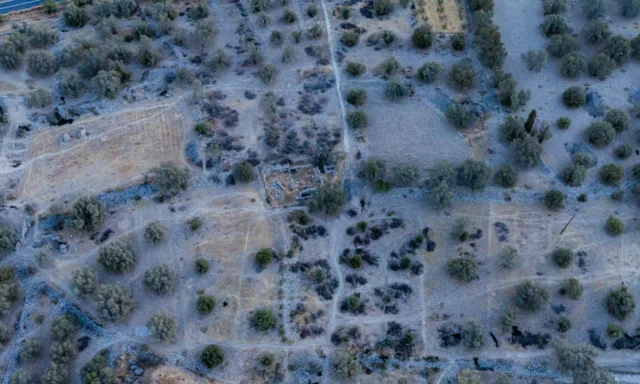
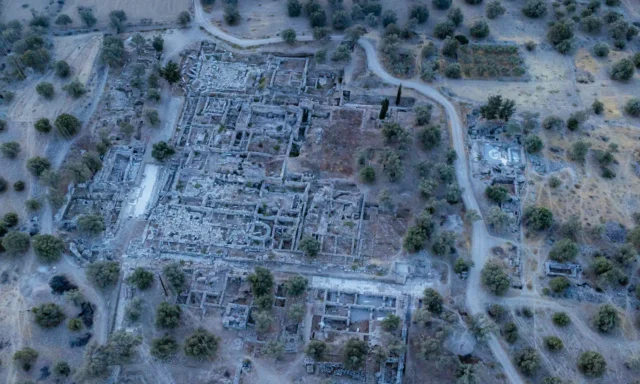

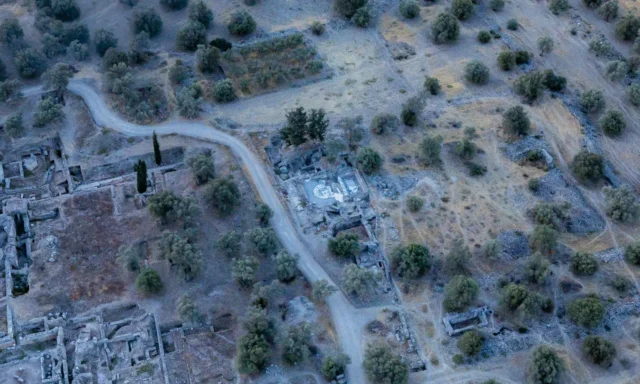
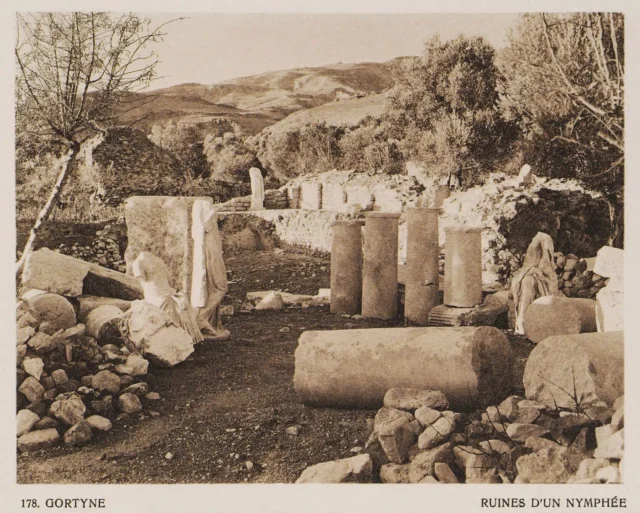

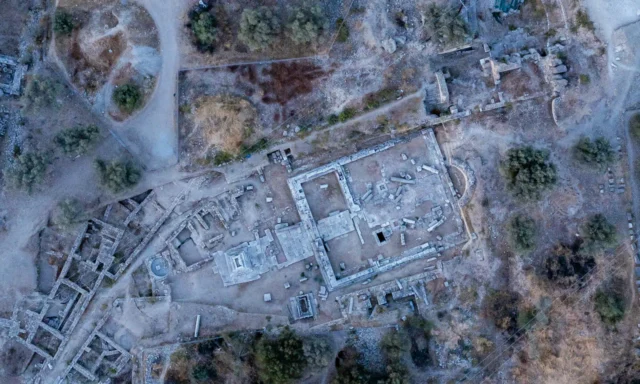

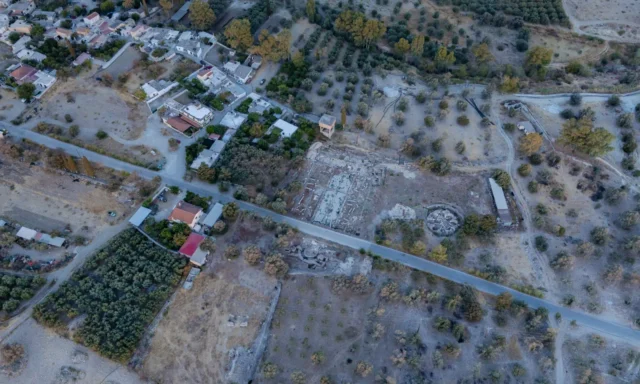


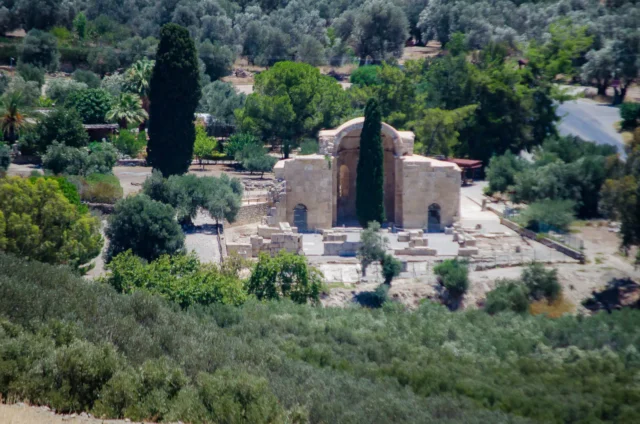
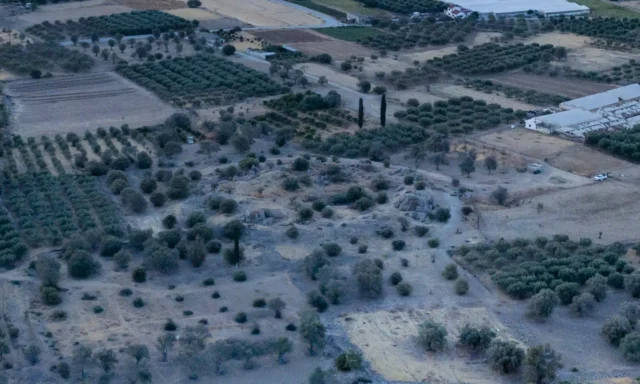
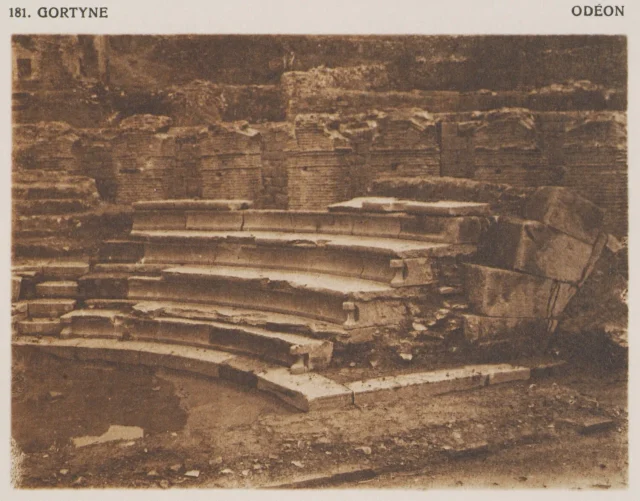
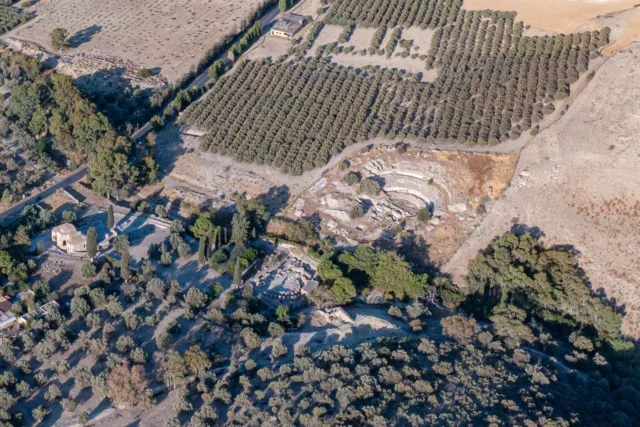

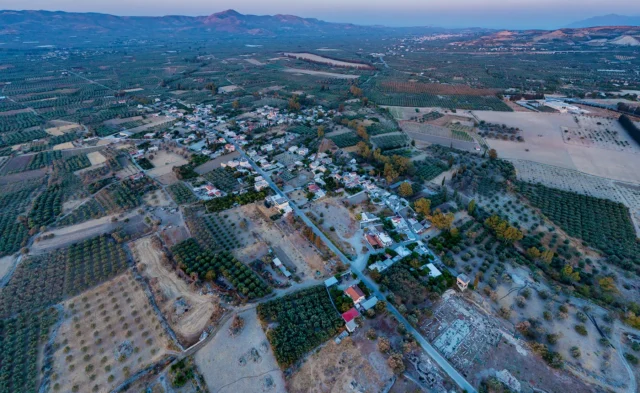

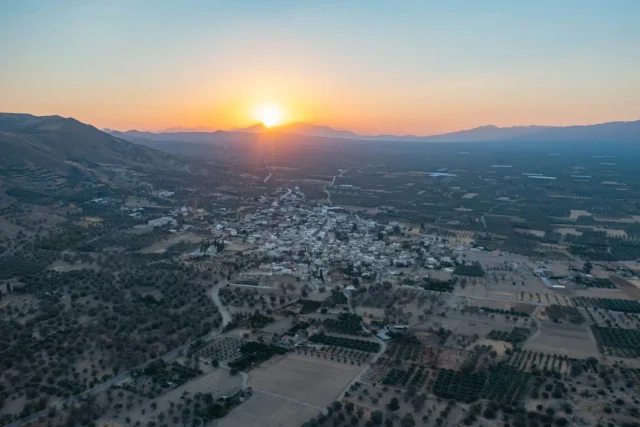
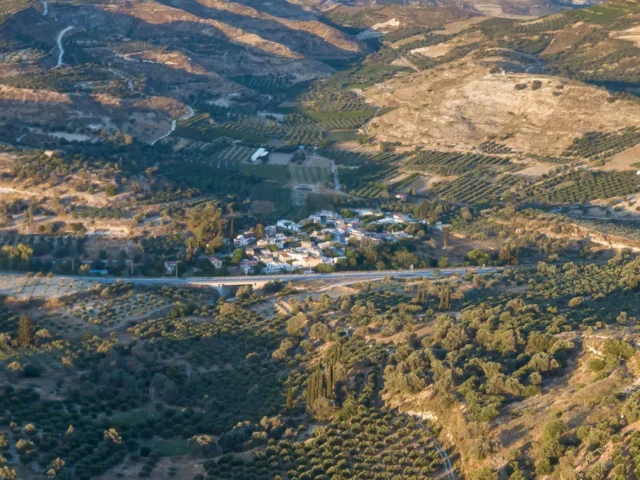
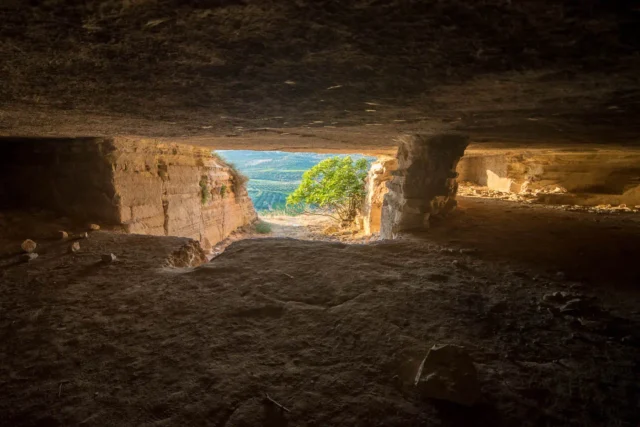

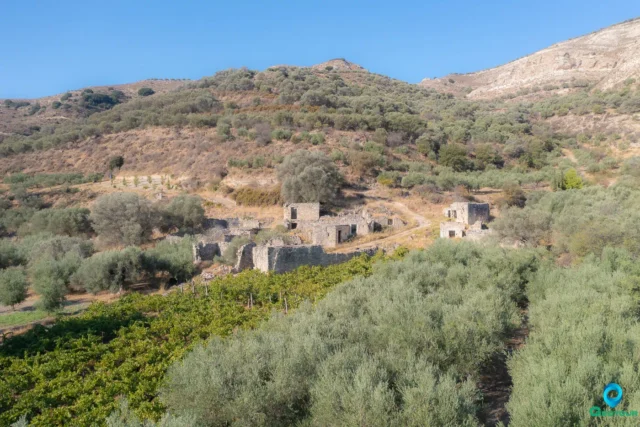

There are no comments yet.